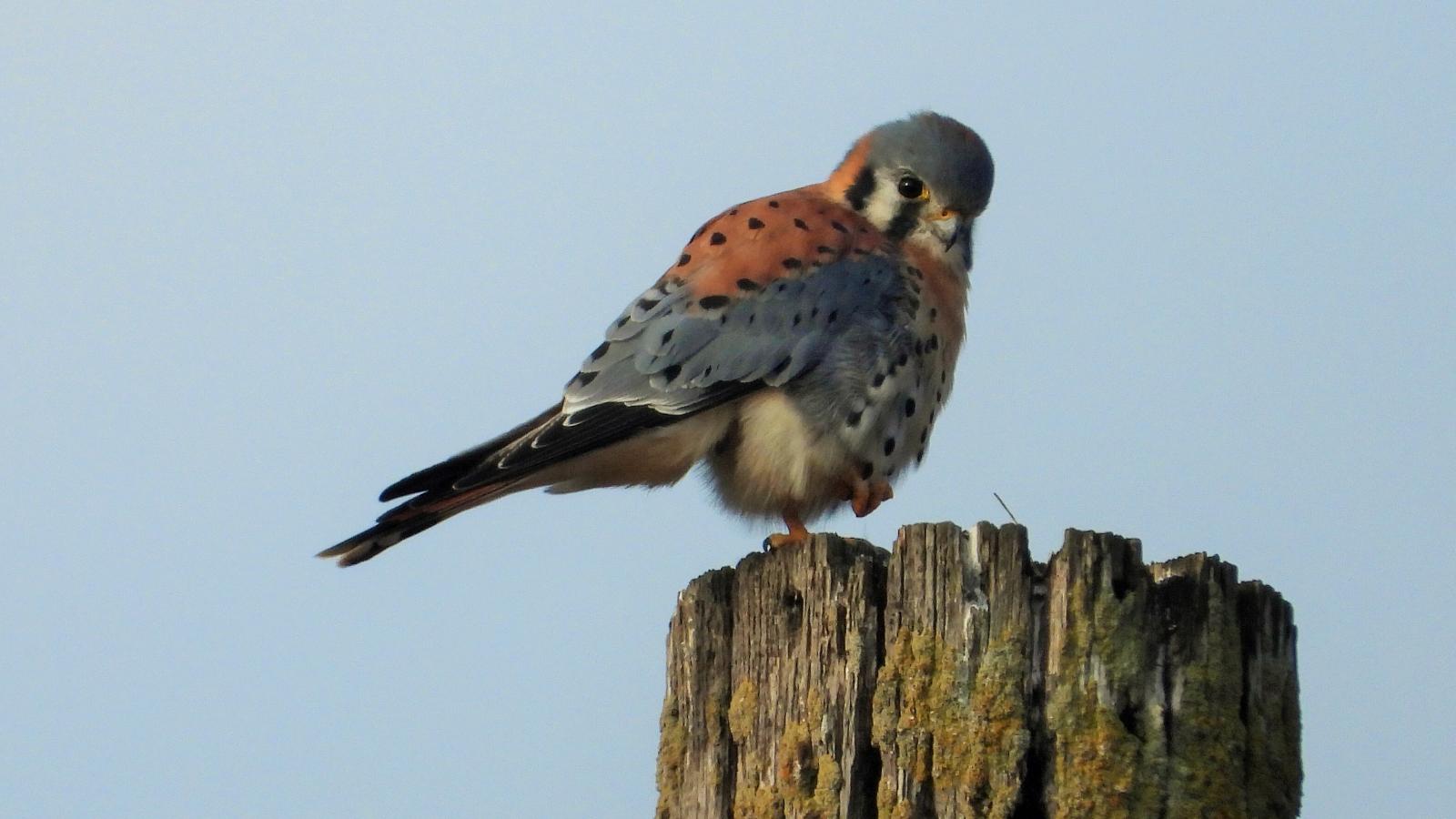Say hello to North America’s smallest raptor: the American Kestrel (Falco sparverius). This tiny predator weighs in at around 3-6 ounces, the equivalent of around 30 to 60 pennies. You can find these cute, year-round residents of the Bay Area hunting insects, small mammals and small birds in open fields and scrublands. They nest in hollow cavities, usually in a dead tree or snag, but sometimes in a dirt bank or a cliff.
These birds also have a superpower: they can see ultraviolet light! This allows them to spot urine trails from rodents — which reflect ultraviolet light — as they hover over fields. These trails act like big neon signs, pointing them to places where their prey is abundant.
American Kestrels were once one of the most common raptors on the continent, but lately the species’ numbers have declined precipitously. From 1966 to 2010, North American populations declined nearly 50 percent. Coastal California has experienced one of the steepest drops, with a 69% loss since the 1960s. Scientists don't yet know exactly what is causing this; it could be exposure to pesticides, competition for nesting sites with invasive European starlings, a lack of suitable nesting sites or another unknown factor.
Luckily, they are still relatively abundant, but, in the meantime, preserving and protecting their grassland and forest edge habitats is extremely important. Head out to La Honda Creek Open Space Preserve to see some prime American Kestrel habitat.


